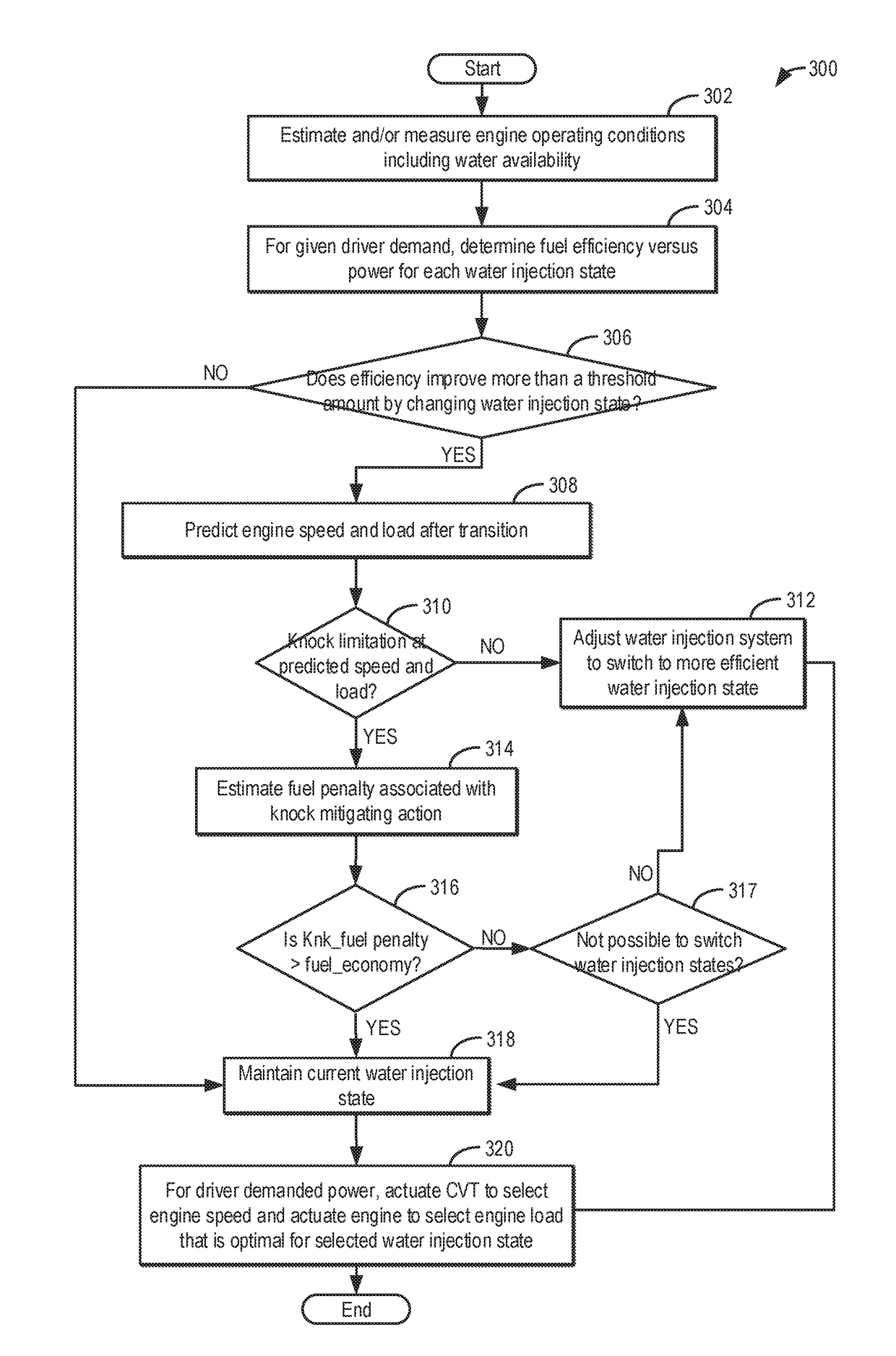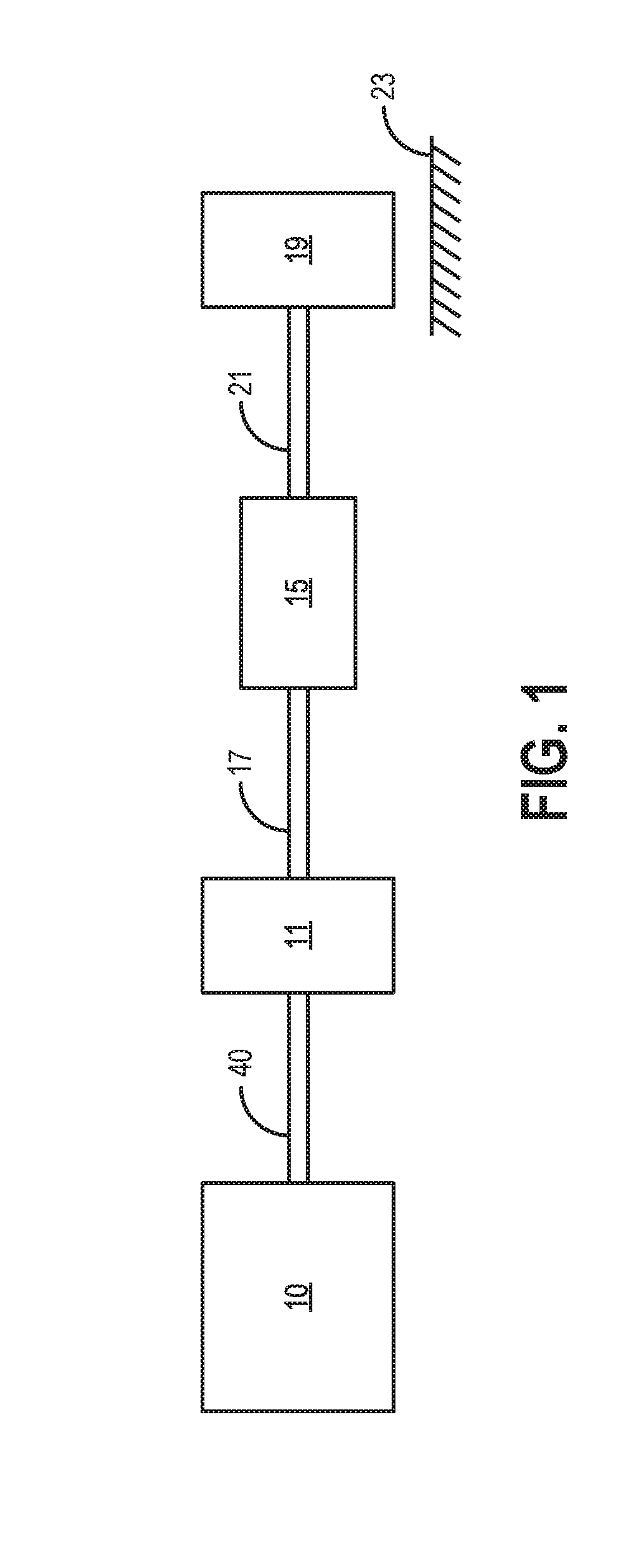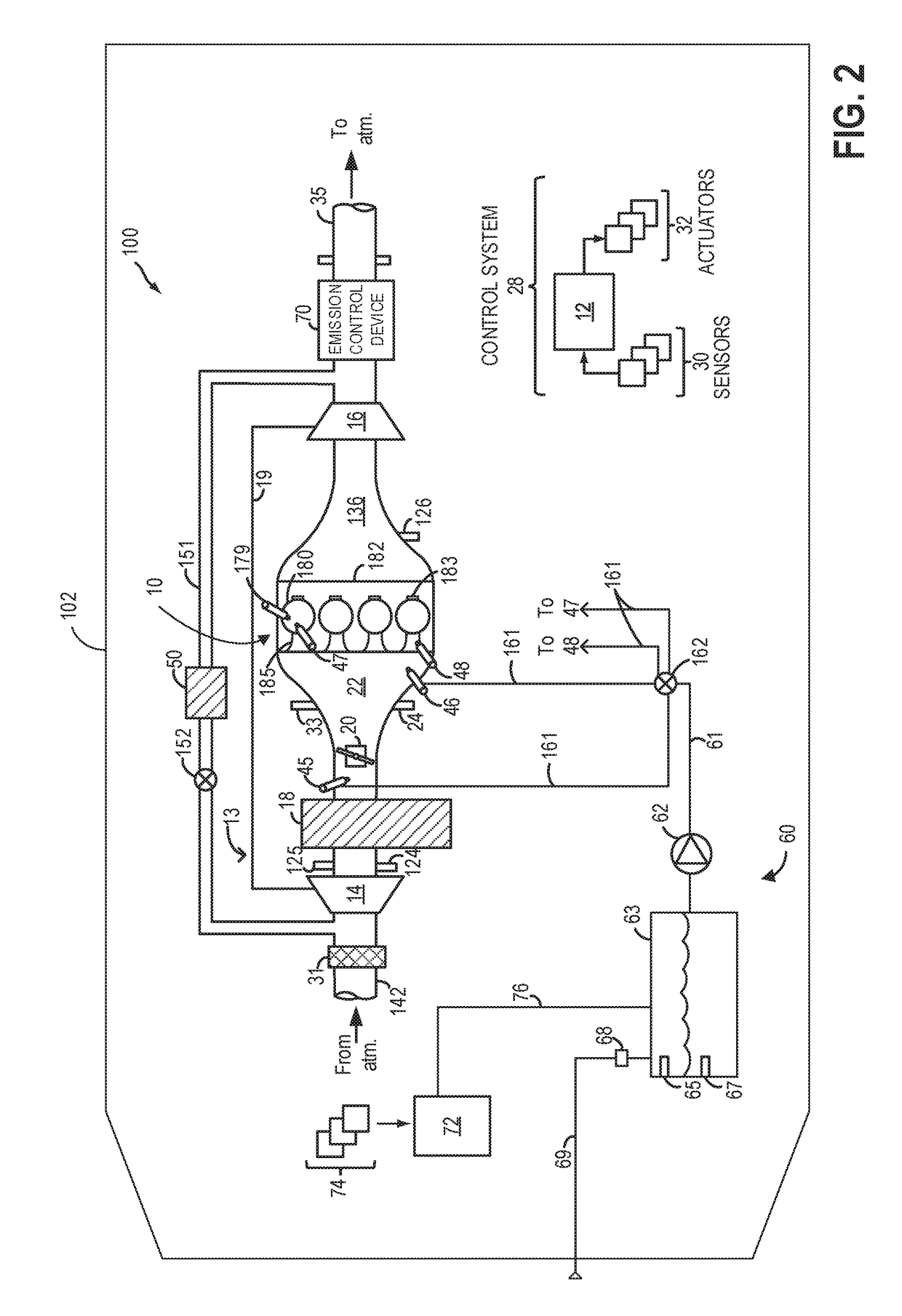Method and system for controlling water injection
a technology of water injection and water injection chamber, which is applied in the direction of machines/engines, mechanical equipment, non-fuel substance addition to fuel, etc., can solve the problems of engine being more knock-limited at high loads, reducing the fuel economy benefit of the transition, and not realizing the optimal fuel economy gain associated with water usage, etc., to achieve the effect of reducing engine emissions, reducing engine emissions, and increasing fuel economy and engine performan
- Summary
- Abstract
- Description
- Claims
- Application Information
AI Technical Summary
Benefits of technology
Problems solved by technology
Method used
Image
Examples
Embodiment Construction
[0014]The following description relates to systems and methods for improving fuel economy in a vehicle having a continuously variable transmission (herein also referred to as a CVT), such as the powertrain of FIG. 1. The vehicle may include an engine system configured for water injection, as described with reference to the engine system of FIG. 2. A controller may be configured to perform a control routine, such as the example routine of FIG. 3, to select a water injection state (active or inactive) based on water availability while adjusting an engine speed-load profile via adjustments to a speed ratio of the CVT to better leverage the fuel economy benefits of water injection. An example map that may be used by the controller to select whether to maintain or transition between water injection states is shown with reference to FIG. 4. An example engine operation with water usage and CVT adjustments is shown at FIG. 5. In this way, water injection technology can be integrated and syn...
PUM
 Login to View More
Login to View More Abstract
Description
Claims
Application Information
 Login to View More
Login to View More - R&D
- Intellectual Property
- Life Sciences
- Materials
- Tech Scout
- Unparalleled Data Quality
- Higher Quality Content
- 60% Fewer Hallucinations
Browse by: Latest US Patents, China's latest patents, Technical Efficacy Thesaurus, Application Domain, Technology Topic, Popular Technical Reports.
© 2025 PatSnap. All rights reserved.Legal|Privacy policy|Modern Slavery Act Transparency Statement|Sitemap|About US| Contact US: help@patsnap.com



